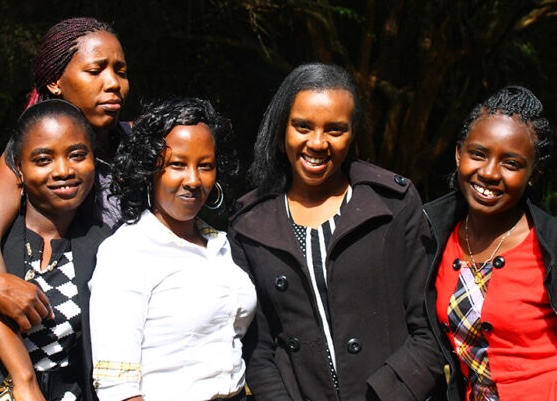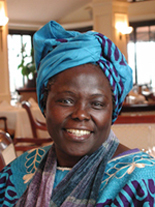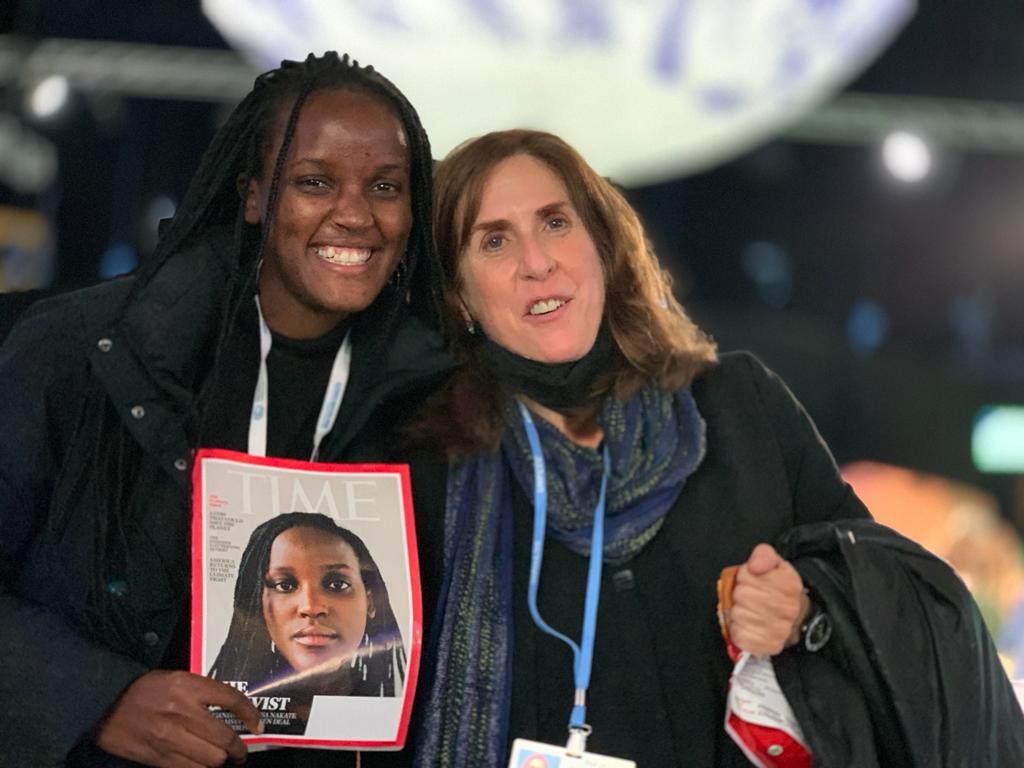
The same year Brighter Green first attended a UN climate change summit (COP15) in Copenhagen in 2009, we began what would become a 15-year pilot program that provided funds for ten girls from the Maasai community (five in Kenya, and five in Tanzania) to attend school, with the goal of encouraging a new generation of young women’s leadership on environmental issues, especially climate resilience. Our partners were the Simba Maasai Outreach Organization (Kenya), the Indigenous Information Network (Kenya), and Tribal Link (U.S.).
The partners recognized that marginalized pastoral communities such as the Maasai in East Africa were already experiencing the effects of climate change (such as droughts, floods, and dislocation) that interrupted the education of young people—particularly of girls, who were often the first to be pulled from school when funds ran short or families were forced to move. Young women also lacked role models; only a tiny proportion of girls were educated beyond the primary level and only a handful had completed university.
The program sought to take the young women, then teenagers, through secondary (or high) school, and on to a university degree or a professional diploma, while receiving training courses in Indigenous rights, environmental issues, gender, and climate change, along with ongoing mentoring. Although the odds were stacked against these young women succeeding due to poverty, gender bias, health issues, and family challenges (which proved insuperable barriers to the five girls in Tanzania), in Kenya, the girls achieved what we’d hoped. Elizabeth Kirouna, the final young woman in the Kenya program, and now a mother of three, graduated from Kenyatta University in July 2024. She received a degree in environmental studies.
You can see her in the photo above, with (from left): Sabina Siankoi, Ann Nailantei, Elizabeth, Joyce Kakenya Barta, and Hellen Naipanoi Kipaili. The other young women are working, or have worked, on water and health projects with municipalities, for environmental and climate non-governmental organizations, in environmental communications, and as a ranger for Kenya Wildlife Services. Each has continued to be a role model for their communities, leading grassroots tree-planting, food security, and environmental education projects, while also mentoring young girls and boys.
The presiding spirit and inspiration for this partnership—as with so much at Brighter Green—was Wangari Maathai, the 2004 Nobel Peace Laureate. When she was born in a rural village in British-ruled Kenya in 1940, the prospects of her being educated were remote. Yet with support from her older brother and mother, she attended primary and secondary school. She excelled as a student, studying in the U.S. and Germany, and receiving her Ph.D. from the University of Nairobi. She became, first, a professor of veterinary anatomy and then the founder of the groundbreaking environmental organization, the Green Belt Movement. She led opposition to corruption and one-party rule in Kenya, and was jailed, beaten, and publicly humiliated for her activism. Eventually, she became a Member of Parliament, a cabinet minister, and then a global figure of conscience on the environment, the climate crisis, and, yes, women’s leadership—where she offered an example of what a girl from a rural background could achieve with hard work, drive, support, and mentoring.
Brighter Green was extremely fortunate to have a long, fruitful association with Wangari and the Green Belt Movement. Her unwavering commitment to environmental protection and restoration, climate justice, grassroots leadership, women’s empowerment, democratic governance, human rights, and a global ethic of care for creation, remains the lodestar for our work. It is also resonant of that ongoing commitment that Brighter Green now provides editorial services to the Managing Director of Africa and Partnerships for the World Resources Institute, Wanjira Mathai, Wangari’s daughter, and has partnered with Vanessa Nakate, a young Ugandan climate activist who was also inspired by Wangari Maathai to raise her voice on behalf of the millions of men, women, boys, and girls whose lives are being affected by the climate crisis.


